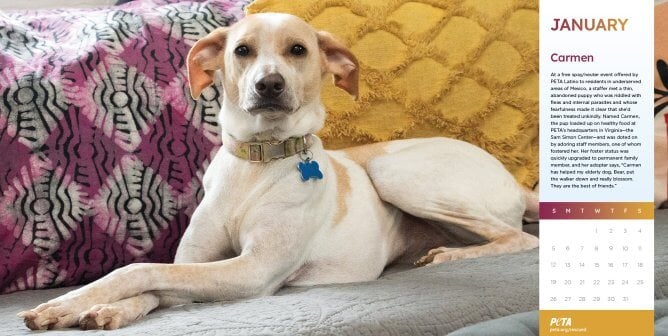15 Disturbing Dissection Photos That Students Posted on Instagram
When we consider the fact that 100 percent of medical schools—including top schools like Harvard, Yale, and Stanford—don’t use animal dissection, it’s clear that cutting up dead animals isn’t necessary for students who hope to pursue careers in scientific fields. In fact, studies show that participating in animal dissection can foster callousness toward animals and nature and can actually dissuade students from pursuing careers in science.
That isn’t too surprising. Dissection reduces once-living beings to nothing more than classroom tools. One peek at the “dissection” hashtag on Instagram (an app that most of your students probably use daily) only reinforces this, showing that more often than not, dissection grabs students’ attention because of its shock value, not its supposed educational value. The dissection images that PETA often sees students post on Instagram don’t convey respect for the animals used or an understanding of the fact that they were once alive.
Here are 15 photos posted on Instagram (and for some, the captions that were posted with them) that show that dissection is teaching the wrong lessons. (Note: We’ve protected the identities of the people who were involved.)
Warning: These images are graphic.
- This photo exemplifies the callousness toward living beings that dissection can foster in young people:
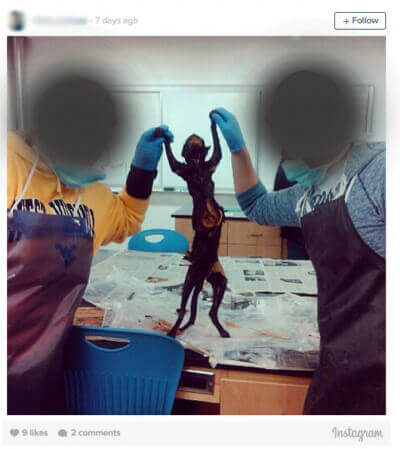
- The caption “Chopping up eyes on a Monday morning as per usual” was included with this photo:
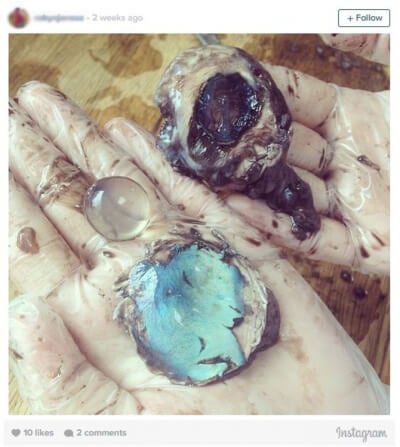
- This photo of a cow fetus was posted with “#yum”:
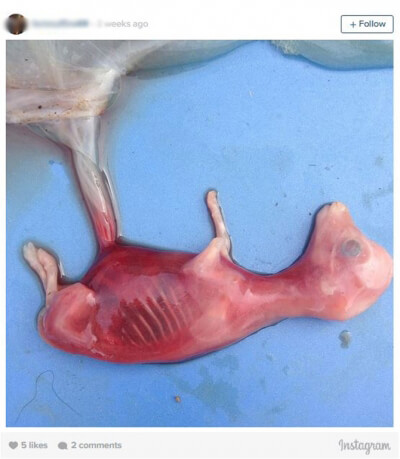
- The caption for this photo was “The phrase: ‘#Eating your #heart out just became a lot more #real’”:
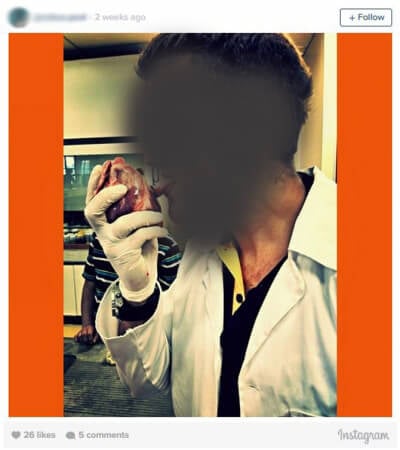
- This photo of a dead bird used for dissection was posted with “#jealous”:
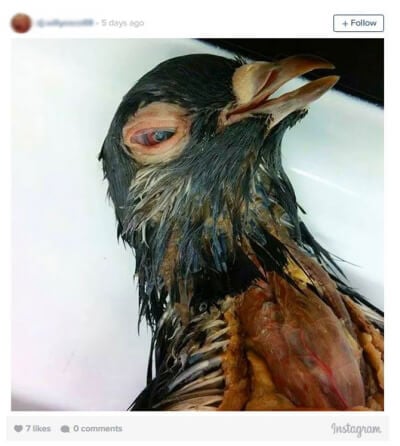
- This image of a dead baby horse was described as “#scienceporn”:
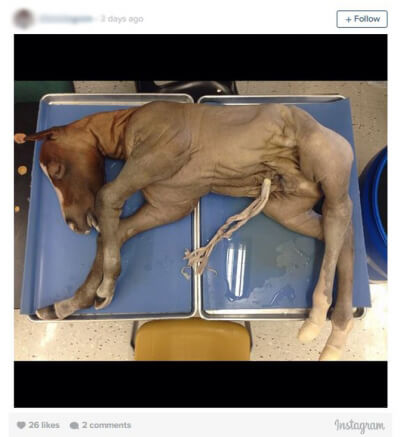
- Imagine a child or teen handling the body parts of a dead animal in any other scenario.
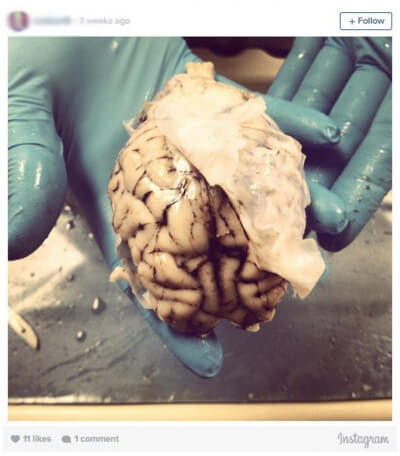
- The caption “My inner sociopath coming out” was included with this photo:
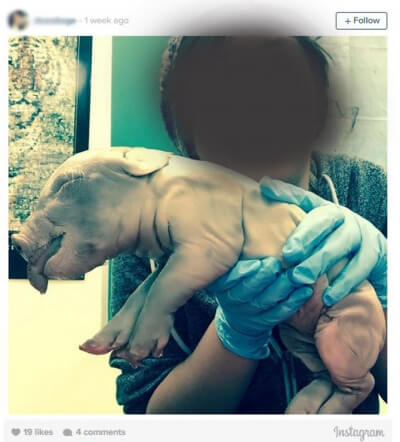
- The caption “World Meet Bacon” is an awful description of this piglet, who was probably cut out of his or her mother’s body at a slaughterhouse and killed before taking even a single breath:
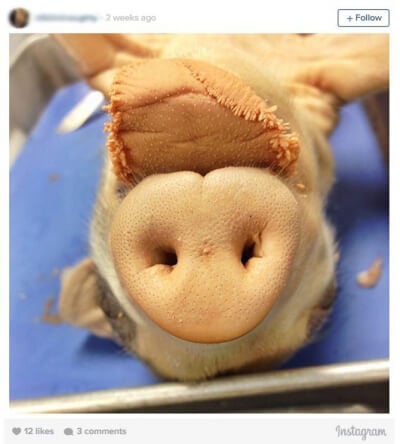
- Mice and rats used for dissection, like the ones below, are usually bred in filthy, crowded warehouses:
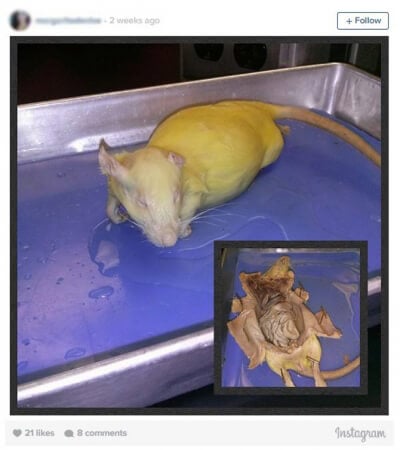
- They’re then gassed to death or drowned en masse before being packaged and shipped to schools for classroom dissection like this one:
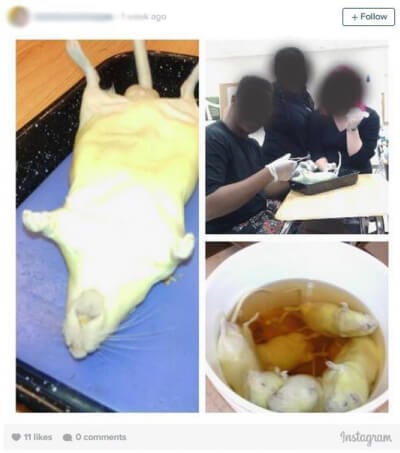
- The cat in this student’s dissection tray might have come from an animal shelter or even been collected from the street …
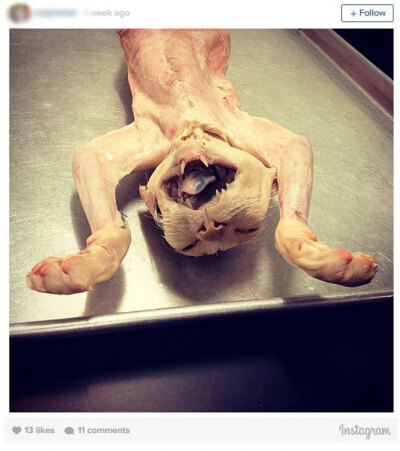
- … meaning that he or she very well could have been someone’s lost animal companion.
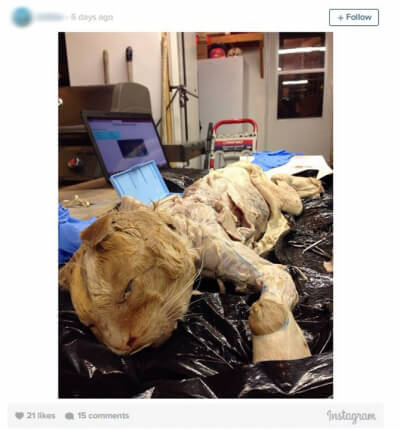
- This frog was probably captured from his or her home in the wild, tossed into a bag, and killed so that he or she could be used for this:
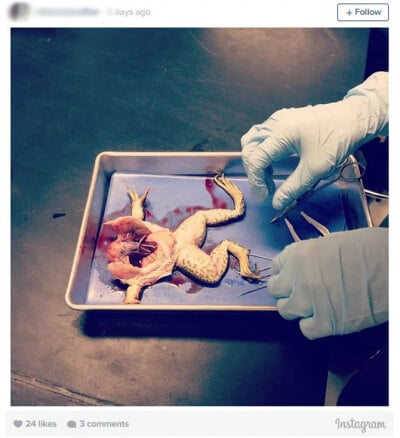
- This is not educational:
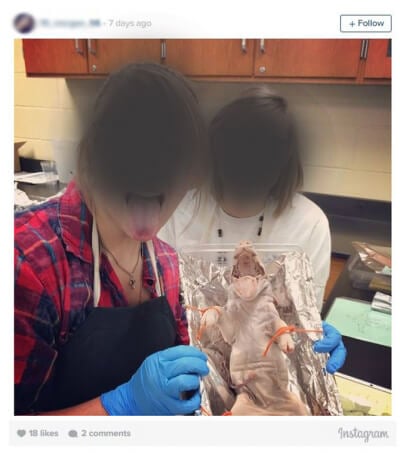
If you think these photos are disturbing, we agree with you. Dissection is cruel and pointless. It teaches students the dangerous lesson that animals are classroom tools—but they’re not. Thankfully, there are better, kinder, and more effective ways for students to learn about life: Virtual-dissection software, high-quality models, and other options are making it easier than ever for schools to cut out the cruelty and teach students using modern, humane methods.




